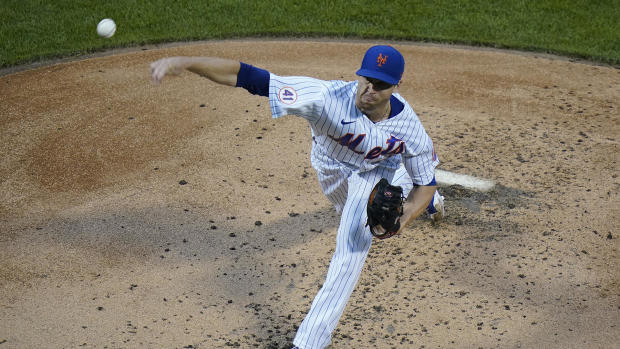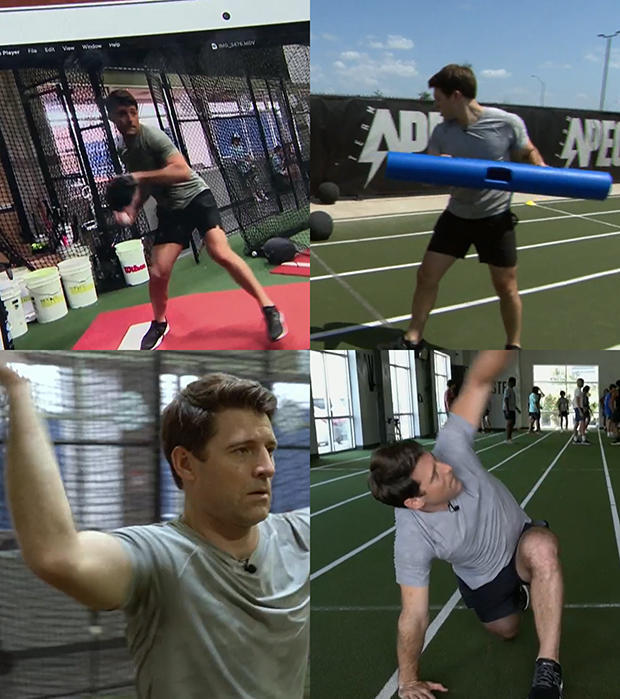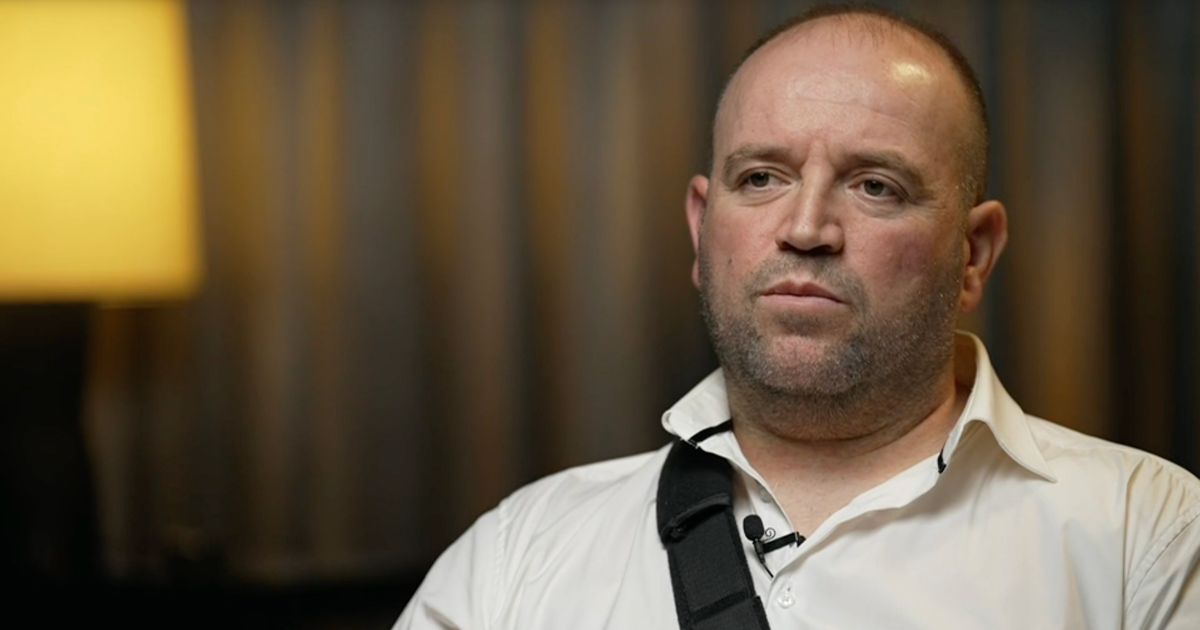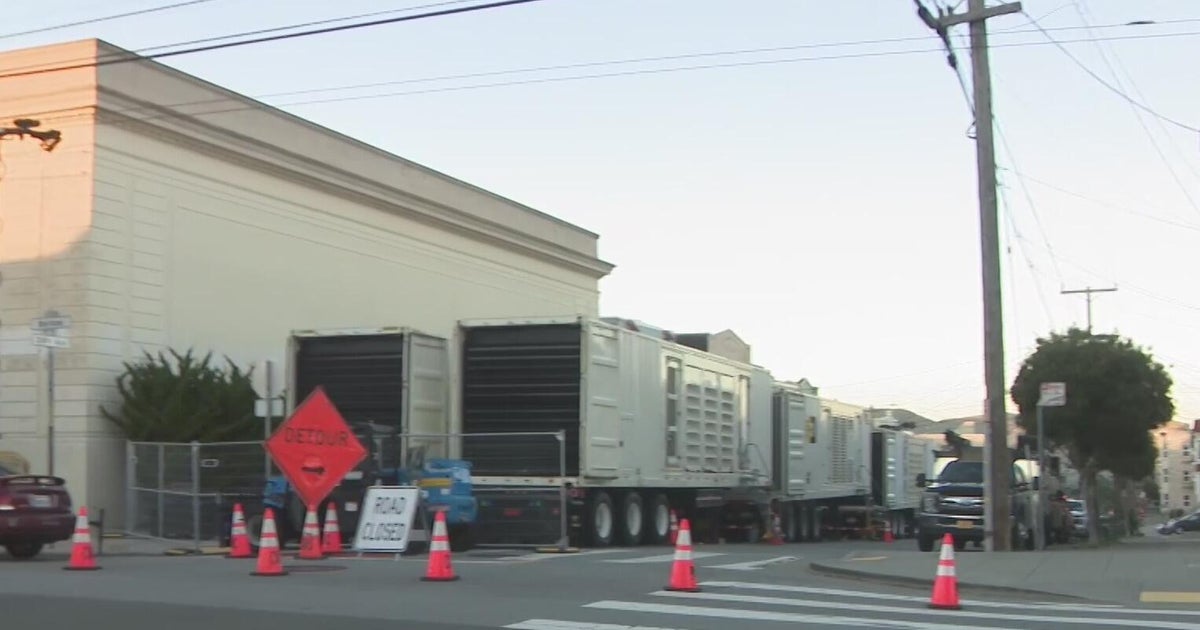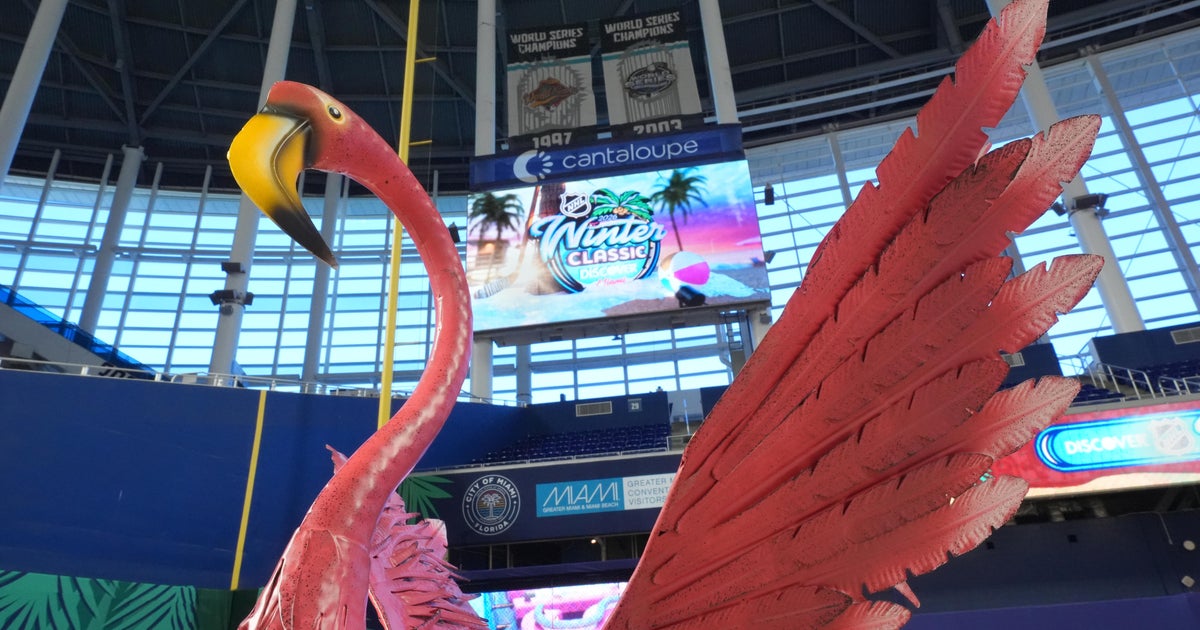Baseball's "existential crisis": Why pitchers are becoming more unhittable than ever
An arm like Hall of Famer Nolan Ryan's used to come along maybe once a generation. But these days, it feels more like once a game.
"Now it's like, 'Ho-hum.' Every night of the week, somebody's throwing 100 [miles per hour]," said Tom Verducci, the senior baseball writer for Sports Illustrated and an analyst for MLB Network. "Pitchers are definitely throwing harder, and more of them are throwing what I call elite velocity; I'm talking about 95 and above."
Pitchers are throwing harder than ever, and hitters just can't keep up.
"CBS This Morning" co-host Tony Dokoupil asked, "So, what explains that revolution in pitching?"
"Well, a generation ago, if you threw the ball hard, people would say, 'Oh, he's blessed with a strong arm.' It was a God-given ability to throw the ball hard," Verducci said. "We've since figured out, the baseball industry has figured out, that velocity is something you can actually teach."
And they're teaching it at gyms like Apec in Fort Worth, Texas, one of a growing number of facilities where pitchers who already throw hard, learn to throw even harder.
One Apec client, White Sox starter Michael Kopech, has been clocked at 105 mph. "He improved six miles an hour in one offseason," said Apec founder Bobby Stroupe.
"So, he was already throwing mid-to-upper 90s, works out here for an offseason, and is touching 105?" asked Dokoupil.
"Right!"
And talk about improved velocity: the Mets' Jacob deGrom is nearly unhittable this year, after adding more velocity to his fastball five years in a row.
So, how exactly does that happen? To find out, Dokoupil volunteered to sample the Apec program himself, working with pitching coordinator Ryan Sullins.
"We basically will put them through a series of drills – bunch of measurements like broad jump, little things here and there," said Sullins. "And we could put it into my system. And it'll print a two-page report. And it'll identify every muscular and neurological weak link on the body."
In the case of a 40-year-old morning show host, there was, of course, plenty of weakness to find. Dokoupil asked, "The tingling is normal, right?"
But consider the potential results: "If we could fix everything on you today and get you solid, ready to go, your projective velocity today would be 90 miles an hour," said Sullins.
From there, the Apec approach is basically a two-step process, combining a custom strength and conditioning program focused on rotational power, with throwing sessions that involve a lot more than just long tossing a baseball.
"So, a lot of times when you build up the backside shoulder, almost always they throw the ball harder," Sullins said.
Programs like this are changing the game of baseball.
According to data from Fangraphs and Statcast, the average major league fastball has improved 3.8 miles an hour in the past 20 years, and the number of pitches at or above 100 mph has jumped from a couple hundred in a season, to what could be nearly a couple thousand this year.
According to Sports Reference, batters have more strikeouts than hits for the fourth straight season, and the big leagues' combined batting average this year is close to a record low — all of which means the pitcher has gained even more of the upper hand in baseball's most basic contest ... and it may only get worse.
Dokoupil asked, "What is the limit? Do you have a sense of what the hardest a human body can throw?"
"I think that there's potential to throw 112, 113 if bio-mechanics were perfect and it's the perfect specimen and they leverage gravity off the mound," said Stroupe.
A mere 100 mile-an-hour fastball takes just 400 milliseconds or so to reach the hitter — quite literally, the blink of an eye.
"You have a split second to pull the trigger," said Michael McCree, a former college baseball player and the author of "Mind of a Superior Hitter," a book designed to give batters whatever advantage they can get.
"If somebody's throwing 100 miles an hour, it's gonna be hard to see, obviously," McCree said. "People ask all the time, 'When you see pitching that fast, do you guess?' And yes. I mean, you have to guess."
"When you say guess, you mean the hitter has to decide ahead of time, 'I'm looking for a fastball here, I'm gonna expect fastball'?"
"You'll have to expect a certain pitch in a certain area," McCree replied.
He said hitters will eventually adjust to baseball's new arms. But Tom Verducci said the game itself may ultimately be forced to find the solution.
Dokoupil asked, "Is this a crisis for baseball?"
"Long-term, it's a problem," he replied. "Because now I think you're risking losing a generation of fans. Every fan, especially a younger fan, wants action. That's the way we're wired now. We want more action in a shorter period of time. Baseball is giving people the inverse of that: less action in a longer period of time. So, that equation needs to change. That's why I say it's an existential crisis. If you do nothing, you're going to continue to alienate people with a lack of action."
Baseball has adjusted before. The league lowered the mound, from 15 inches to 10, after pitchers dominated the 1968 season.
Major League Baseball is experimenting with one of its partners, the Atlantic League, in moving the mound back by a foot this year.
